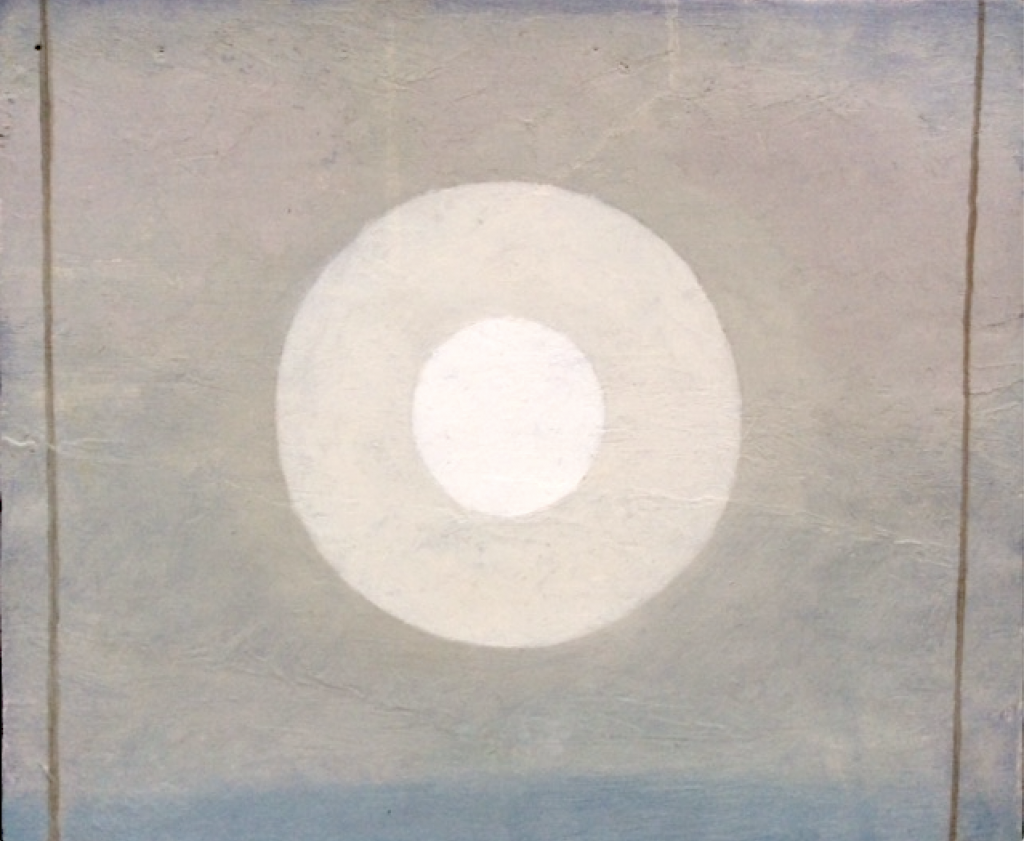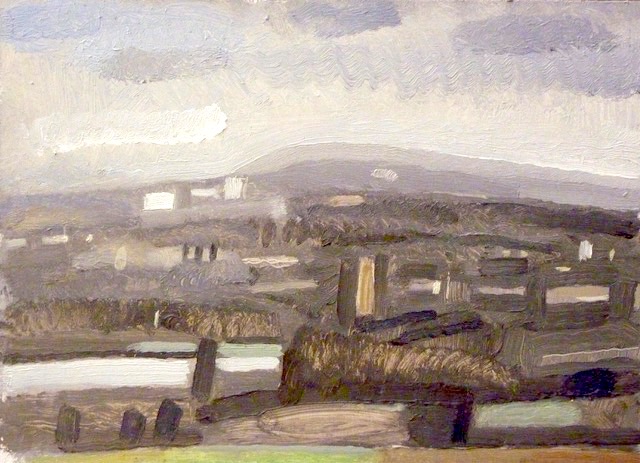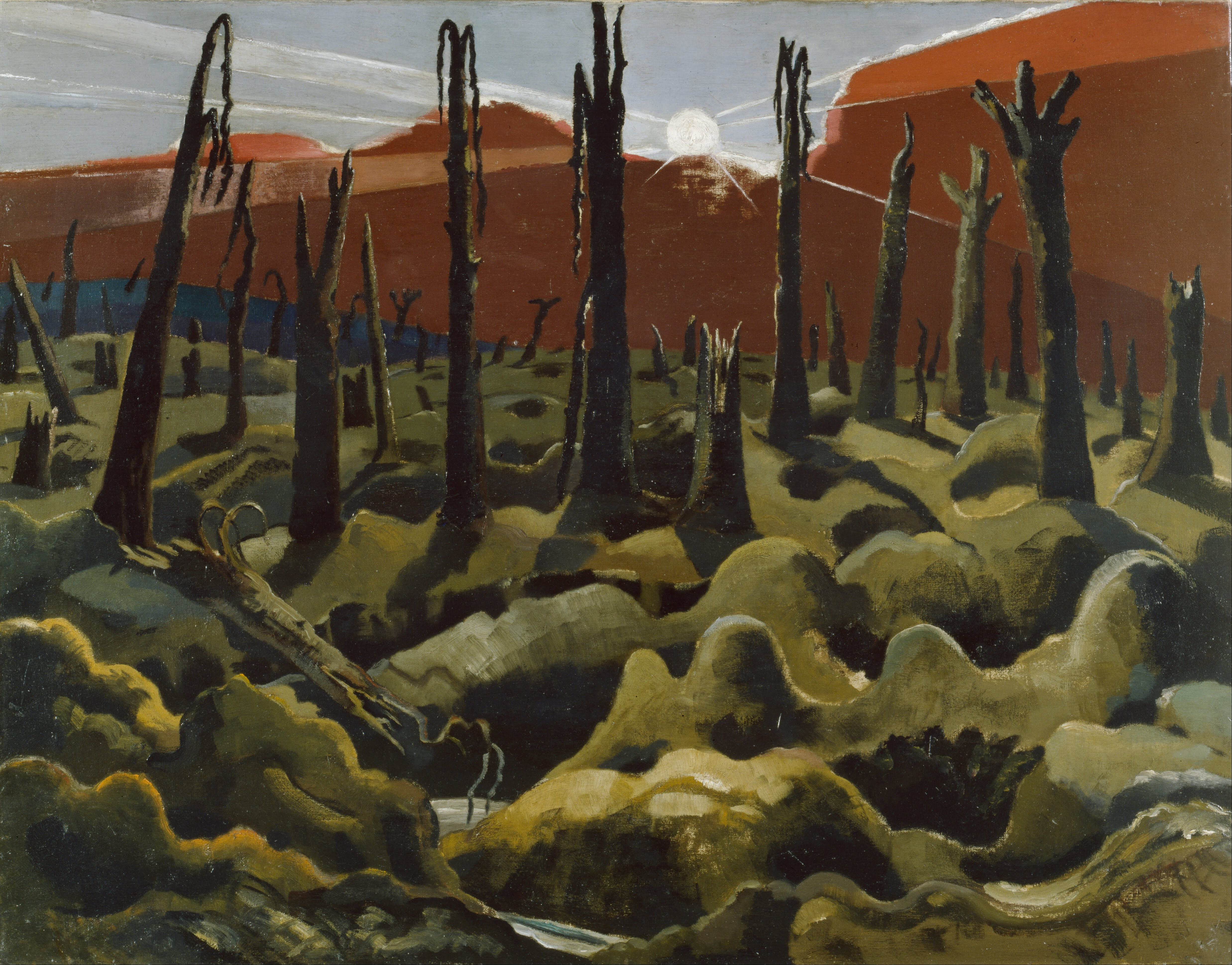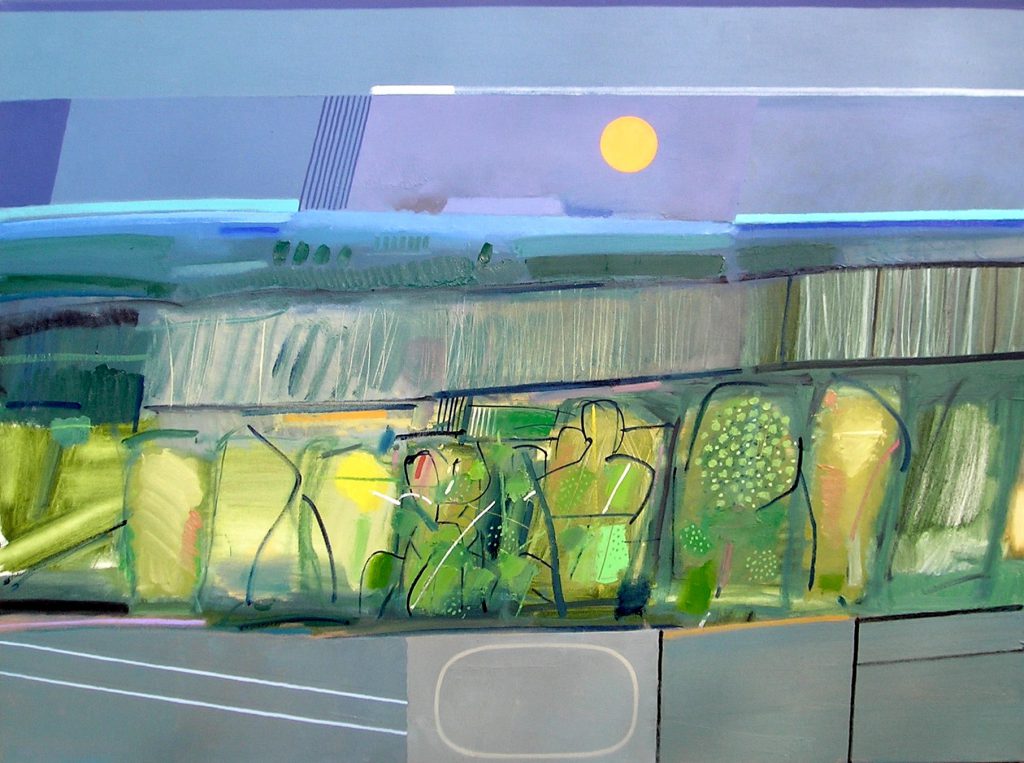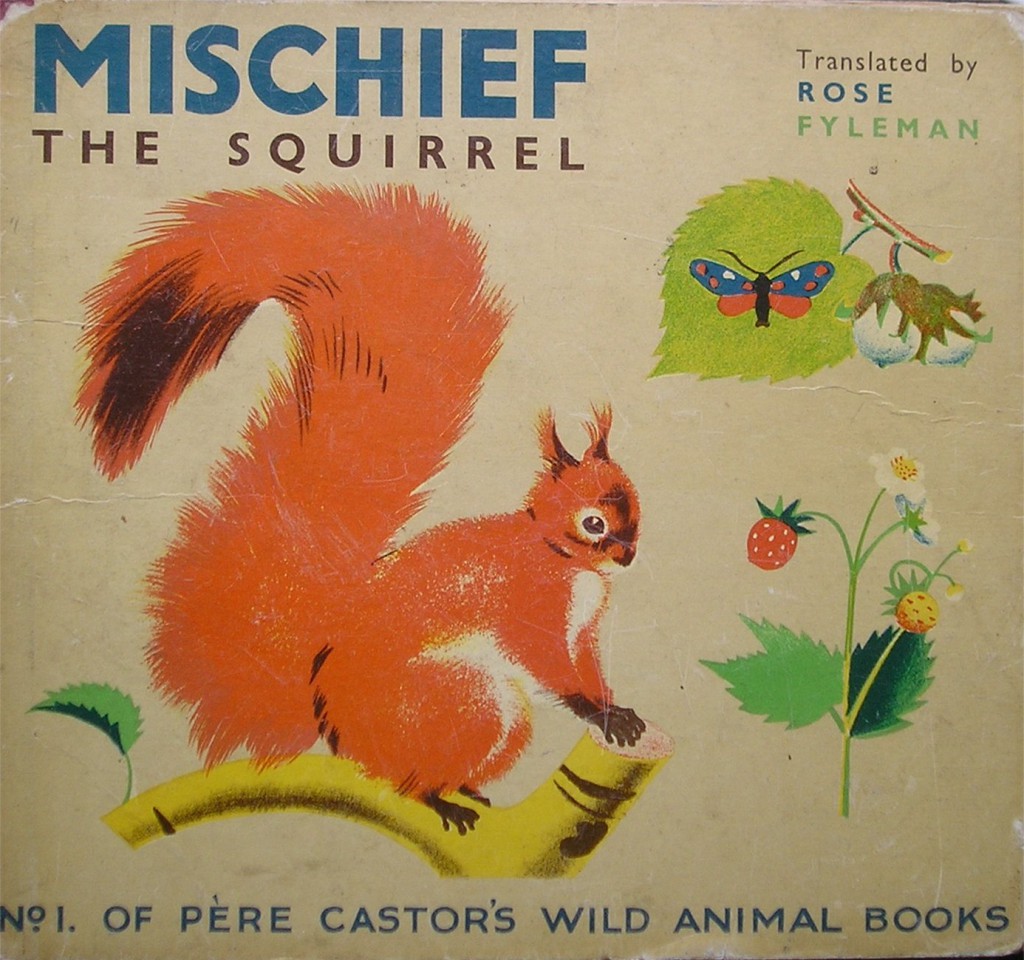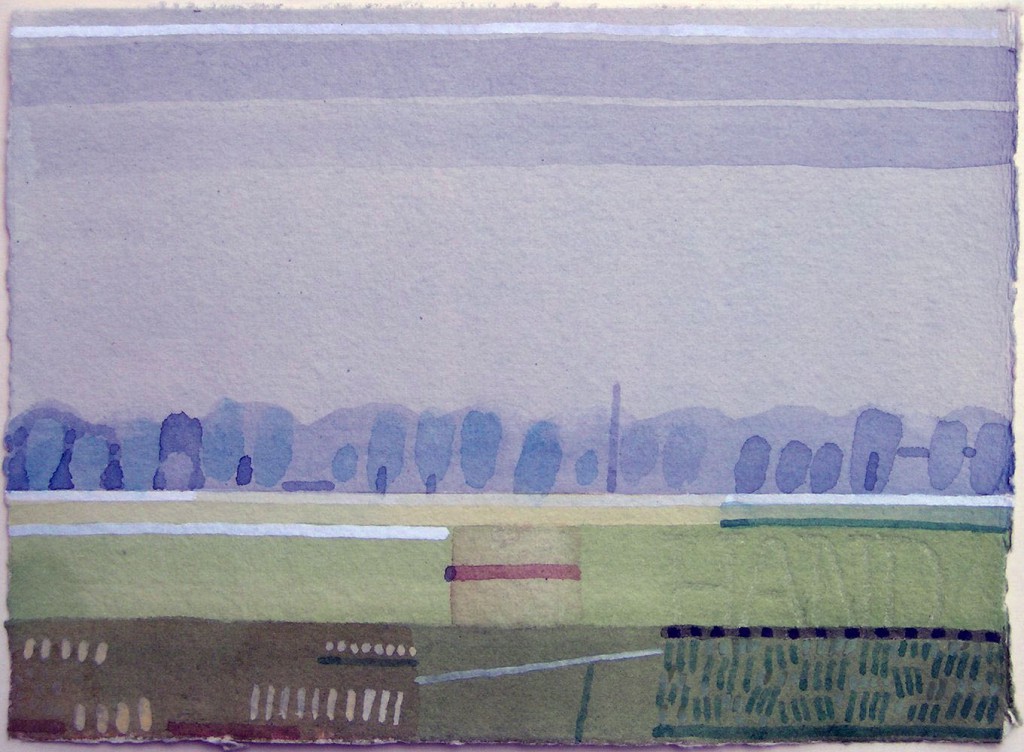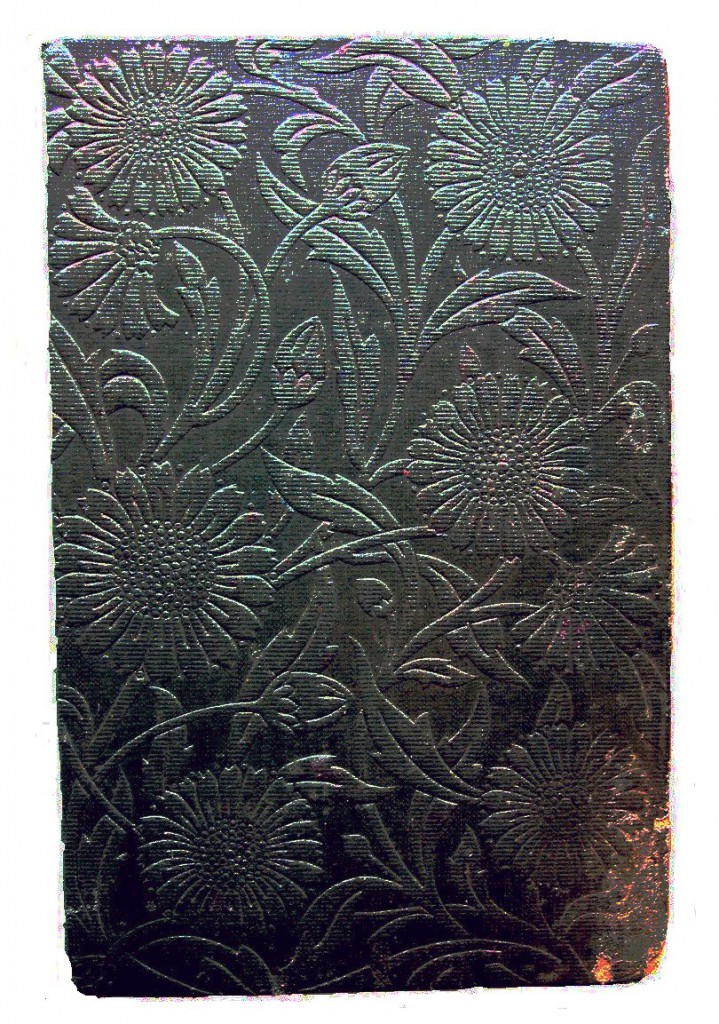
The experience of landscape and how to interpret it has been a major preoccupation for many years. In the 1960s as a student I made large abstract canvases which were in fact about space. It was the time of the first moon landing. Since then I have travelled a bit. To Canada, to India, to Spain, and here to the Lake District and Cornwall. I have made paintings and drawings in all these places. The vast scale of the Rocky Mountains, the heat of Spain, the colour and smell of India, the cold of the Lakes in December, all have presented me with the strange problems of how to get something out of these very different environments. But I always return to my home turf. One I have lived in for almost all my life. This year I began what I had hoped to be a project painting in the same location for most of the year. To this end I overhauled my gear and began work in the chill of early February high over Oxford looking down from Wytham Woods, a stretch of woodland covering a hill to the west of Oxford, owned by the university and the site of 70 years of ecological research. Continue reading “Painting Wytham”



